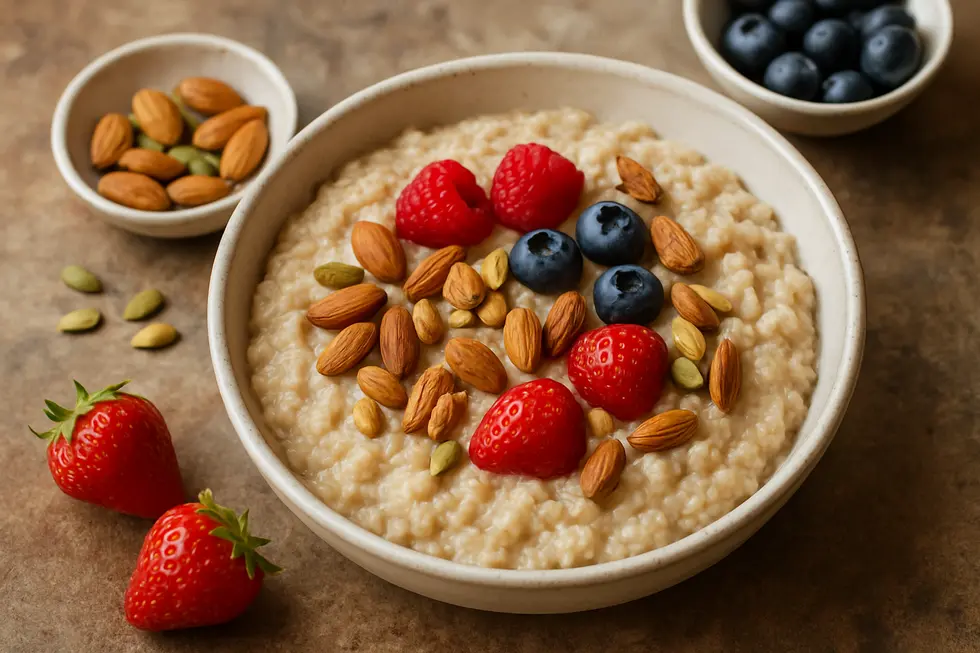For individuals grappling with diabetes or those striving to keep their blood sugar in check, understanding the glycemic index (GI) of foods can be a pivotal step towards better health. A glycemic diet plan not only helps in managing blood sugar levels but also contributes to overall well-being by incorporating low GI foods into daily meals. This comprehensive guide will delve into the core components of such a diet, explore how it can be effectively implemented, and elucidate its health benefits. By equipping yourself with the right knowledge, you can make informed choices that promote stability and vitality.
Mastering Blood Sugar: The Core of the Glycemic Diet Plan

The Glycemic Diet Plan serves as a strategic approach to nutrition, centering on the glycemic index (GI) and glycemic load (GL) to manage blood sugar levels effectively. This plan empowers individuals by focusing on foods that produce steady increases in glucose, reducing the likelihood of rapid spikes. Understanding the interplay between GI and GL allows for more precise dietary choices, making this an essential tool for those with diabetes or insulin resistance.
The cornerstone of the Glycemic Diet Plan lies in distinguishing between glycemic index and glycemic load. The glycemic index ranks the carbohydrate content of foods on a scale from 0 to 100, based on how swiftly they elevate blood sugar levels. However, GI alone does not account for portion sizes, which is where glycemic load becomes invaluable. By considering the actual carbohydrate content per serving, GL offers a more practical insight into a food’s impact on blood glucose. This dual consideration ensures that dietary plans are both effective and sustainable.
Central to the Glycemic Diet Plan is the emphasis on foods with low GI and GL scores, such as whole grains, fresh fruits in their natural form, vegetables, legumes, nuts, and lean proteins. These foods are slowly digested, maintaining more stable blood glucose levels. Conversely, it is advisable to limit the intake of processed and refined carbohydrates, which are common culprits in causing sudden glucose surges. For example, swapping sugary cereals or pancakes for options like fermented whole wheat sourdough bread or Greek yogurt can significatively stabilize post-meal blood sugar.
Crafting meals that balance proteins and healthy fats alongside low-GI carbohydrates is also a strategic approach. Proteins and fats slow the digestive process and mitigate the overall glycemic response. For instance, a meal featuring whole wheat pasta paired with fiber-rich vegetables not only satisfies hunger but also moderates the effective glycemic load of the dish. This thoughtful meal composition supports gradual energy release and reduces cravings or energy dips that follow high-sugar meals.
Implementing this diet plan extends beyond meal choice to include meal planning strategies. Enhancing fiber intake through vegetables and legumes plays a crucial role in controlling glucose absorption rates. Carb counting, adjusted for fiber, ensures accurate insulin dosing, which is particularly beneficial for those with diabetes. Awareness of alcohol intake is also important, aligning with general health guidelines to maintain diabetes control.
Adopting the Glycemic Diet Plan is synonymous with making informed dietary decisions that enhance metabolic health and life quality. For those seeking tailored meal planning tools, resources provided by healthcare professionals offer guidance, ensuring dietary adjustments are both effective and sustainable over the long term. This evidence-based framework aligns closely with broader nutritional principles designed to enhance overall well-being and diabetes management.
For further reading on managing diabetes through diet and exploring the nuances of this strategic approach, visit autumnellenutrition.com.
Crafting a Balanced Plate: Essential Components of a Glycemic Diet Plan

In the realm of glycemic diet planning, the choice of foods plays a pivotal role in managing blood sugar levels effectively. This dietary approach, which is built on the concept of the glycemic index (GI), focuses on incorporating foods that induce a slower release of glucose, thereby maintaining a more stable blood sugar level. The core of a glycemic diet plan revolves around selecting foods that are not only low in glycemic index but also high in nutritional value.
At the heart of a glycemic diet plan are whole grains. Foods such as brown rice, quinoa, and whole wheat bread are staples for anyone following this diet. Their high fiber content is instrumental in slowing down the digestion of carbohydrates, which in turn helps to prevent sudden spikes in blood sugar levels. Fiber, beyond its role in digestion, contributes to a feeling of fullness, aiding in appetite control and, by extension, weight management — a vital aspect for many managing their blood sugar.
Legumes, such as black beans, lentils, and chickpeas, are another essential component. These foods are lauded not only for their low glycemic indices but also for their rich content of both fiber and plant-based protein. The combination of these nutrients supports a gradual glucose absorption process while providing sufficient energy and satiety throughout the day. Consumption of legumes can contribute to better overall glucose regulation and improved heart health.
Incorporating nuts, such as almonds and walnuts, into the diet can also significantly benefit blood sugar management. These nutrient-dense foods provide healthy fats and proteins that help stabilize blood sugar levels, especially when consumed alongside fruits or meals that include carbohydrates. Additionally, the magnesium present in nuts plays a crucial role in glucose metabolism, enhancing insulin sensitivity and reducing the risk of developing type 2 diabetes.
Non-starchy vegetables should occupy a central place on the plate as well. Vegetables like spinach, broccoli, and peppers add significant volume to meals while contributing minimal calories and carbohydrates. Their low GI score means they are slowly absorbed, providing vital nutrients without causing significant glucose spikes. These vegetables are indispensable due to their high content of vitamins, minerals, and antioxidants, supporting overall cellular function and health improvement.
Lean proteins, such as fish, skinless poultry, or tofu, are critical for a balanced glycemic diet plan. These proteins do not raise blood sugar levels significantly and instead provide essential amino acids that are vital for the repair and building of tissues. Moreover, the inclusion of lean protein sources in meals enhances satiety and can stabilize blood sugar levels, especially when paired with carbohydrates.
To effectively integrate these components, meal planning should focus on combining different food groups to create balanced meals. For example, pairing a whole grain like quinoa with legumes and steamed non-starchy vegetables, along with a portion of grilled fish, makes for a nutritionally balanced meal. This combination ensures a moderate glycemic load and provides essential nutrients, supporting both energy levels and blood sugar control. For additional insight on effectively incorporating these foods into meal planning, consider resources like the Cleveland Clinic on Glycemic Index.
Mastering the Art of the Glycemic Diet: Key Strategies for Success
Implementing a glycemic diet plan effectively requires a deep understanding of how different foods impact your blood sugar levels. This dietary approach revolves around the glycemic index (GI), a tool that quantifies how quickly certain foods elevate blood glucose. Lower GI foods, such as whole grains, fruits, and vegetables, are ideal because they result in a slower and more gradual increase in blood sugar, thereby preventing spikes that can lead to health complications over time.
One of the most critical aspects of a glycemic diet is learning to customize it based on individual glycemic responses. This means tracking your food intake and monitoring your blood sugar levels to identify patterns and pinpoint foods that cause significant blood sugar increases. By maintaining a food diary coupled with glucose monitoring, you can gradually replace foods that cause high spikes with those that elicit a more tempered glycemic response. In addition to dietary choices, other factors like stress, sleep, and physical activity can influence blood sugar levels and should be factored into your dietary planning.
Strategic meal planning is another cornerstone of successfully managing a glycemic diet. This involves structuring meals in a way that supports stable blood sugar levels. For example, starting a meal with non-starchy vegetables, followed by protein and fat, and ending with carbohydrates can help moderate the rise in post-meal blood glucose. Such sequencing ensures a smoother and more controlled blood sugar elevation. Moreover, spacing meals evenly throughout the day and including a small, healthy snack before bedtime can contribute to maintaining stable glucose levels.
Incorporating high-fiber foods into meals is also essential, as they slow down glucose absorption. Healthy fats, found in foods like avocados and nuts, not only provide satiety but also aid in moderating blood sugar spikes when consumed with carbohydrates. These strategies, rooted in scientific understanding of food interactions, can provide effective control over blood sugar levels and significantly reduce the risk of long-term health issues. For further guidance on integrating these strategies into your favorite meals, Holistic glucose management tips can be found in resources that offer practical advice for avoiding hidden sugar spikes.
A comprehensive approach to a glycemic diet involves integrating these principles with personal health goals and lifestyle preferences. By committing to a tailored dietary plan and continually adjusting it based on real-time feedback from your body, you can effectively control blood sugar levels. This journey towards optimal health and blood sugar management is not only about food choices but a holistic approach to well-being.
Harnessing the Benefits of Glycemic Diet for Optimal Health
Embracing a glycemic diet plan as a lifestyle choice brings with it a host of benefits that extend beyond stable blood sugar levels. This diet, centered around low glycemic index (GI) and load (GL) foods, offers individuals a sustainable way to manage their health—particularly those with diabetes or those who are at risk. The primary advantage of this diet is its ability to prevent the sharp spikes and drops in blood sugar that can accompany high GI foods. These fluctuations are not only risky but are also often responsible for feelings of fatigue and hunger, leading to unhealthy eating habits.
By prioritizing low GI foods—such as whole grains, nuts, legumes, specific fruits, non-starchy vegetables, and lean protein—individuals can ensure that their meals release sugars into the bloodstream slowly. This gradual digestion helps sustain energy levels and keeps appetite in check, thus preventing overeating and its associated health issues. Importantly, the control over blood glucose levels achieved by these diets is reflected in improvements in HbA1c levels, a key marker in diabetes management.
Moreover, the glycemic diet plan supports cardiovascular health by reducing cardiometabolic risk factors. Improvements in blood lipids, body weight, and blood pressure have been recorded, illustrating the diet’s comprehensive health benefits. By managing these factors, the risk of developing serious complications such as heart disease is significantly lowered. Individuals looking for structured guidance can find comprehensive overviews of effective dietary strategies here.
Furthermore, low GI/GL diets offer a foundation upon which other dietary strategies can be built. Combining this approach with balanced meals that incorporate adequate protein and healthy fats can enhance blood sugar management, especially when high GI foods are appropriately paired with low GI options. These combinations help offset potential spikes, creating a balanced diet that’s both enjoyable and health-conscious.
Additionally, incorporating practices such as intermittent fasting can further enhance these benefits. Studies indicate that intermittent fasting may improve insulin sensitivity and aid glycemic control for both type 1 and type 2 diabetes sufferers. This approach, while not universally applicable to all, offers promising results for those it suits, providing another tool in the arsenal for managing blood sugar effectively.
The results of these combined dietary strategies affirm that adopting and maintaining a glycemic diet plan is beneficial not only for immediate blood sugar control but also for long-term health management. For comprehensive insights into additional dietary strategies, see Revista Diabetes. By integrating these measures, individuals can take active charge of their health, improving quality of life and reducing the risk of chronic diseases.
Final thoughts
A glycemic diet plan is more than a strategy for managing blood sugar; it is a holistic approach to enhancing one’s health. By integrating low GI foods into daily meals, individuals can stave off blood sugar spikes and maintain a balanced lifestyle. Whether you are managing diabetes or simply seeking to optimize your dietary habits, embracing a glycemic diet plan offers numerous health advantages, fostering both physical and emotional well-being.
Don’t just read about better health—live it. Download the Glycemic Index Guide Tracker today to start making smarter food choices, track your glucose, and stay on top of your nutrition—all in one app.
About us
Glycemic Index Guide Tracker is a powerful yet easy-to-use mobile app designed to help you make informed dietary choices by tracking the glycemic index (GI) and glycemic load (GL) of the foods you eat. Whether you’re managing diabetes, following a low-carb or keto diet, or simply aiming to maintain steady energy and better health, the app offers a comprehensive food database, nutrition and glucose tracking tools, weight monitoring, and curated low-GI recipes—all in one intuitive interface. It’s your go-to companion for understanding how different foods affect your blood sugar and for building smarter eating habits.


Leave a Reply